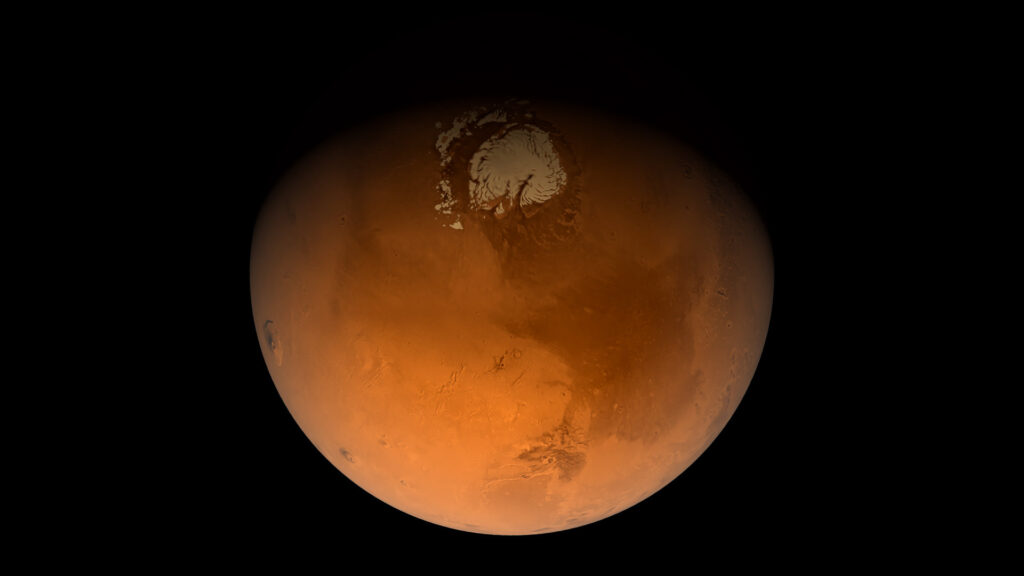The war in Ukraine severed the partnership between Russia and the European Space Agency on the ExoMars mission. Two Russian scientific instruments will be returned. An alternative is evaluated.
We don’t know yet with What the ExoMars mission will leave for the red planet, but we now know When. At the bend of a shared stage point in mid-March, the European Space Agency (ESA) delivered an estimated timetable for the departure of its rover: October 2028. This is, in a way, the “rebirth” of the mission, after a year of uncertainty.
The ExoMars rover will amputate two instruments
A rebirth, as well as a transformation. ESA has given some details about the Rosalind Franklin rover, named in honor of a scientist who first detected the helix structure of DNA. Thus, all the Russian components will be dismantled from the machine and returned to the institutes that designed them. Two Russian instruments are targeted.
This withdrawal of equipment is the direct consequence of the war in Ukraine launched by Russia – Moscow was a key partner in the ExoMars 2022 mission. But everything was thrown out the window on February 24 with the invasion. Incidentally, this deprived Europe of Russia’s launch capabilities. Today, it is impossible to cooperate with Roscosmos, the counterpart of ESA.
The return of the two Russian components to their owners (the Adron neutron detector and the ISEM infrared spectrometer) will be partially fulfilled — if the neutron spectrometer will not be replaced, the infrared spectrometer has a chance of being. The European Space Agency is working on it, with a solution coming from its Member States.
By leaving in 2028 for an arrival on Mars in 2030, ExoMars will then be ten years late – initially, it was to leave in 2018 to arrive in 2020, hence its nickname of ExoMars 2020. The material sent on site does not risk- not be stricken with obsolescence in seven years? In other words, will it be necessary to modify the rover beyond the replacement of the two Russian instruments?
The Esa is not worried: ” technologies[…] will remain relevant to the existing and planned ‘competition’ on Mars “. Moreover, Esa claims to be the only one to date to take up the challenge of digging two meters deep. That said, the Esa will deal with the obsolescence of parts between now and the return of the mission to its launch pad, in five years.
A shooting window every two years for Mars
One question remains: why so late? There is first of all a concern for celestial mechanics: ” The best Mars launch opportunities arise every two years, when Earth and Mars are optimally aligned “, points the Esa. We don’t leave anytime for this planet close to the Earth, if we want to optimize the flight and the fuel.
This is why, during the first postponement of the ExoMars mission, the calendar immediately slipped from 2020 to 2022. The flight was precisely to be one of the great moments of the space conquest last year.

This leads to the second problem: Europe has no immediate alternative option to compensate for the absence of the Russian rocket (Proton) nor the atmospheric re-entry and descent vehicle, also provided by the former -partner. Impossible to look back quickly to the year 2024, which was the next window. It’s way too early.
That left 2026 or 2028. The first deadline was immediately qualified as ” very difficult by Josef Aschbacher, head of the European Space Agency. The second was therefore preferred. This is the launch opportunity “ the earliest “. ” This balances the time needed to set up mission elements with a good landing scenario in 2030 “Judges the ESA.
Last unanswered question: which launcher will be responsible for propelling everything to Mars?
Support from the United States is envisaged, to compensate for the departure of Russians, via the American space agency (Nasa) and private service providers – SpaceX or the United Launch Alliance (ULA). However, the presence of sensitive American components prohibited from transfer – radioisotope heating elements – would at first sight prevent relying on Ariane 6.
If you liked this article, you will like the following ones: do not miss them by subscribing to Numerama on Google News.
